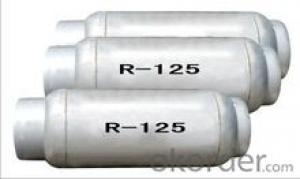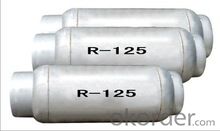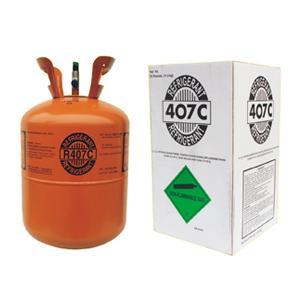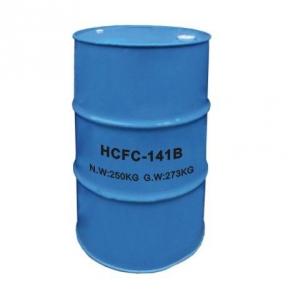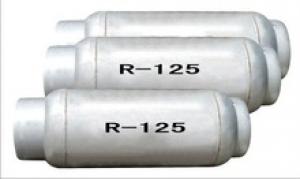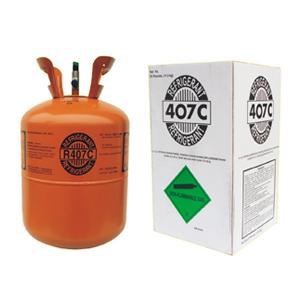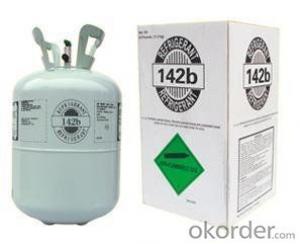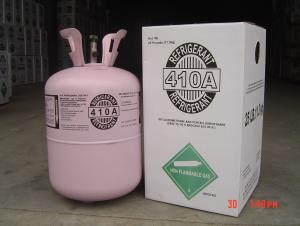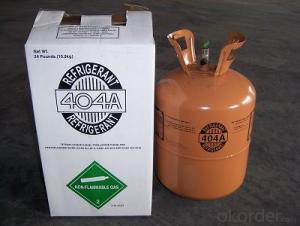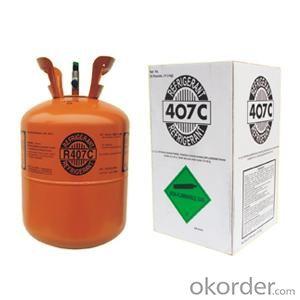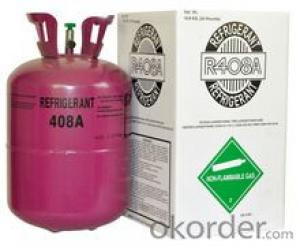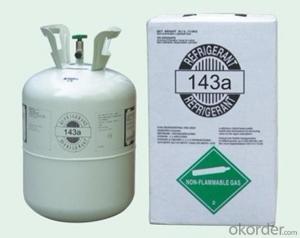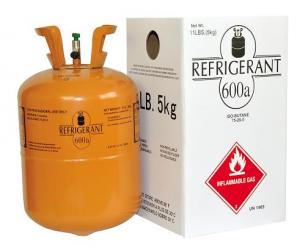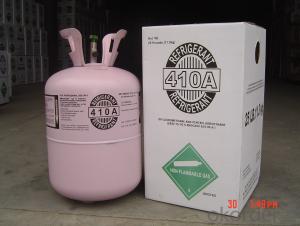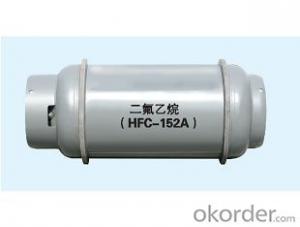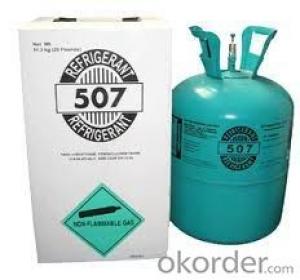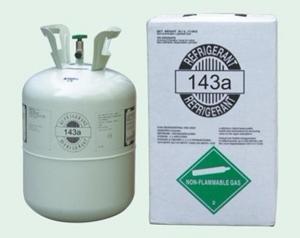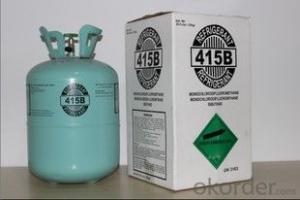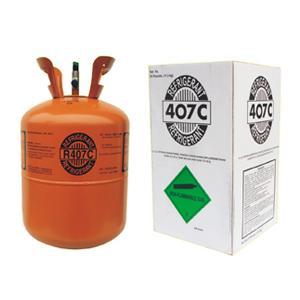Refrigerant Gas R125a
- Loading Port:
- Shanghai
- Payment Terms:
- TT OR LC
- Min Order Qty:
- -
- Supply Capability:
- 1000MT m.t./month
OKorder Service Pledge
OKorder Financial Service
You Might Also Like
Specifications
1.OEM is accepted
2.Delivery time:15 days
3.Good service after sale
4.competitive price in this line
Refrigerant, it is an important component of mixed working substance, and can replace R502 and R22. Used as fire-extinguishing agent, can replace Halon1211 and Halon1301.
Property of chloride
Formula: CHF2CF3
Molecular weight: 120.0
B.P.,°C: -48.3
Critical temperature,°C: 66.05
Critical pressure, MPa: 3.59
Critical density, g/cm3: 0.571
Liquid density, 25°C,g/cm3: 1.19
Vaporization heat at B.P., KJ/Kg: 165
ODP(CFC-11=1): 0
QWP(CO2=1): 3500
Quality standard
Appearance: Colorless, no turbid
Odor: Odorless
Purity, ≥%: 99.8
Water, ≤%: 0.001
Acidity, ≤%: 0.0001
Residue on evaporation, ≤%: 0.001
Packaging & Delivery
| Packaging Detail: | 800kg, 1000kg, ISO tank. |
| Delivery Detail: | 15days |
- Q: What is the difference between an aromatic compound and a hydrocarbon derivative?
- The aromatic compound is a benzene ring containing compound, which may be a hydrocarbon or a hydrocarbon derivative. Hydrocarbons are hydrocarbon-containing compounds, and hydrocarbons containing hydrocarbons other than hydrocarbons are derivatives of hydrocarbons. The two concepts have crossed.
- Q: High school chemical hydrocarbons with hydrocarbon derivatives with water solubility, density for accurate and comprehensive summary, thank you. Out of college entrance examination
- Hydrocarbons are insoluble in water and have a lower density than water
- Q: What is the proportion of hydrocarbons synthesized by Fischer-Tropsch Synthese in liquid fuels consumed by Nazi Germany? What are the proportions of these hydrocarbons as an industrial raw material into their military industry, in addition to fuel? At that time, did the Fischer-Tropsch preparations occupy an important position in Nazi Germany's military industry or heavy industry?
- The FT synthesis method is a coal liquefaction technique under an iron-based catalyst (conventional FT method is a cobalt-based catalyst). Mainly syngas (CO and H2-based) saturated alkylation technology.
- Q: Sodium can be used to identify derivatives of hydrocarbons
- Sodium can identify hydrocarbon derivatives that are alcohol
- Q: Peracetic acid is not
- A series of compounds produced by the substitution of hydrogen atoms in other molecular or atomic groups as hydrocarbon derivatives, peroxyacetic acid is CH3COOOH, and should be considered
- Q: What is the definition of organic matter
- Organic matter usually refers to carbon-containing compounds, or hydrocarbons and their derivatives are collectively referred to as organic compounds.
- Q: From the molecular level, are not all the energy obtained from the redox reaction?
- Because one to be recycled, and secondly to be converted into electricity
- Q: Why not ah?
- A series of compounds in which a hydrogen atom in a hydrocarbon molecule is replaced by another atom or radical is called a derivative of a hydrocarbon
- Q: What is organic?
- Simply refers to the organic ingredients containing organic ingredients. The real organic cosmetics are organic plants as the main raw material, do not add artificial spices, artificial colors, oil-free ingredients, the added preservatives and surfactants must be strictly limited, and the manufacturing process to comply with the relevant provisions, can not use animals Experiments and the use of radiation sterilization products. In general, the certification of organic skin care products must meet the following conditions: First, the organic environment, the closest growth of natural growth, production base (ie, the environment) are not damaged, water (irrigation water), soil (soil ), Gas (air) is not contaminated. Second, organic cultivation, no artificial fertilizer irrigation or artificial feed, without antibiotics, chemical insecticide, without genetic variants. Third, the organic processing and production projects, including the harvest after washing, finishing, packaging, processing, transportation, storage, sales and other sectors) did not subject to secondary pollution.
- Q: Is grease a polymer compound? Is it a derivative of saturated hydrocarbons?
- Not a polymer can not be considered a saturated hydrocarbon derivatives. Natural oils contain unsaturated structures
Send your message to us
Refrigerant Gas R125a
- Loading Port:
- Shanghai
- Payment Terms:
- TT OR LC
- Min Order Qty:
- -
- Supply Capability:
- 1000MT m.t./month
OKorder Service Pledge
OKorder Financial Service
Similar products
Hot products
Hot Searches
